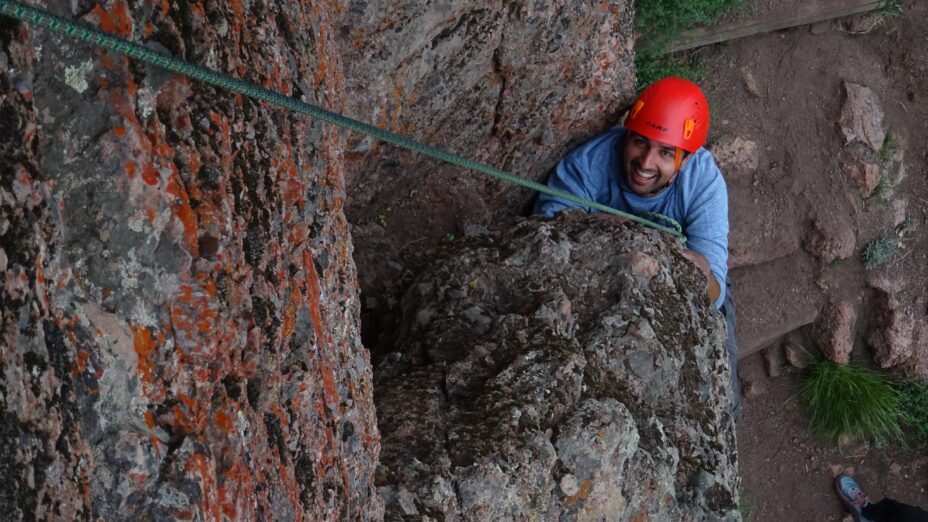
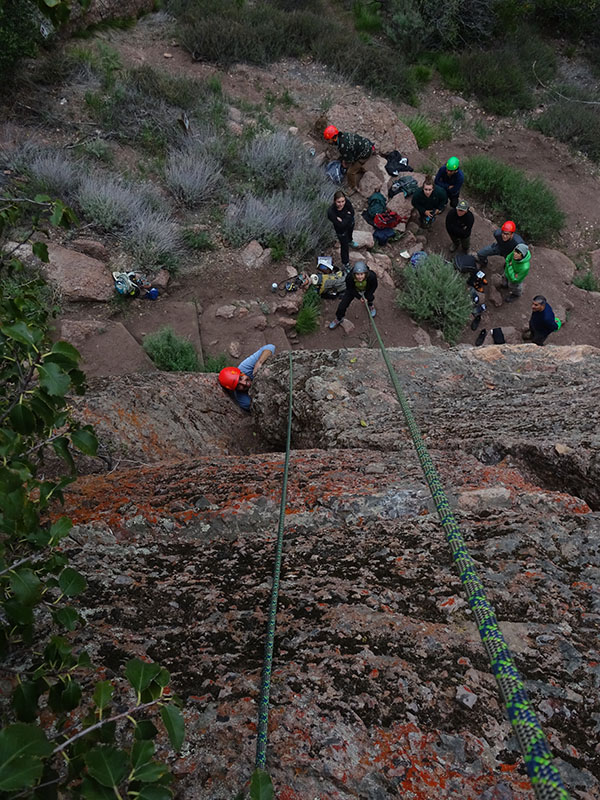 On Saturday, March 19, Save Mount Diablo led our first Discover Diablo, On Belay event at Pinnacles National Park. We started early at 7:00 AM to get ahead of the forecasted rains, which were expected to start at 11:00 AM, and it’s a good thing we did because NOAA was spot on with timing.
On Saturday, March 19, Save Mount Diablo led our first Discover Diablo, On Belay event at Pinnacles National Park. We started early at 7:00 AM to get ahead of the forecasted rains, which were expected to start at 11:00 AM, and it’s a good thing we did because NOAA was spot on with timing.
Together we hiked up to the “Tourist Trap,” which is a crag on the eastern entrance, just minutes from the parking lot. It hosts numerous intermediate routes in the 5.6 to 5.10 range that are perfect to learn on, whether that be climbing for the first time or transitioning from the climbing gym into the outdoor arena.
We chose two crack routes that I led and set tope ropes on, which had options for variations for climbers to play on and learn, in that there was an obvious crack to ascend or just to the side of the crack were face climbs covered in pebbles, cobble stones, and knobs to pull and stand on.
Crack climbing is a very versatile skill to learn in climbing because many of the world’s most beautiful rock faces are covered in cracks, making that technique very transferable. Think of crack climbing as a language or martial art: Once you learn that form of movement or communication, it is something that you can utilize all over the place in infinite situations.
Face climbing can be more site-specific, in that the rock that is being climbed has different characteristics that are unique to that rock type or area. For instance, the rock in Tuolumne Meadows is very compact, monolithic granite that has been glaciated, making it very slick, when compared to granite in areas that has not been glaciated like the monzogranite found in areas like Joshua Tree, which is extremely sharp and covered in large crystals.
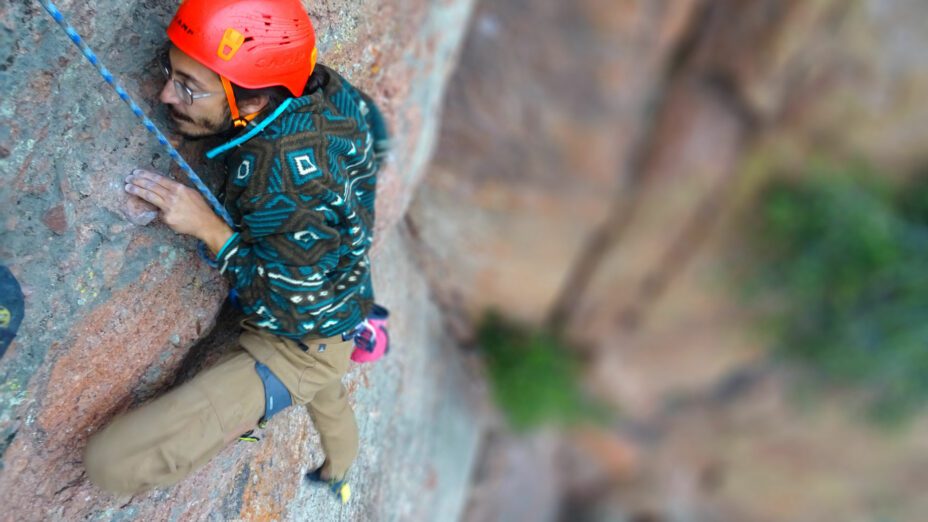
Using the delicate face holds to climb upward.
Sandstone climbs completely differently than granite and have tons of different quality types like the sandy rock found in Mount Diablo’s Pine Canyon, and the more compact and less sandy rock found at Boy Scout Rocks, just miles away and up a thousand or so feet in elevation.
The rock found in the Pinnacles is a volcanic conglomerate that has traveled 195 miles from Lancaster over the course of 23 million years. It traveled as a result of the San Andreas fault splitting the area in half and hauling it north, right smack dab in the middle of the Diablo Range.
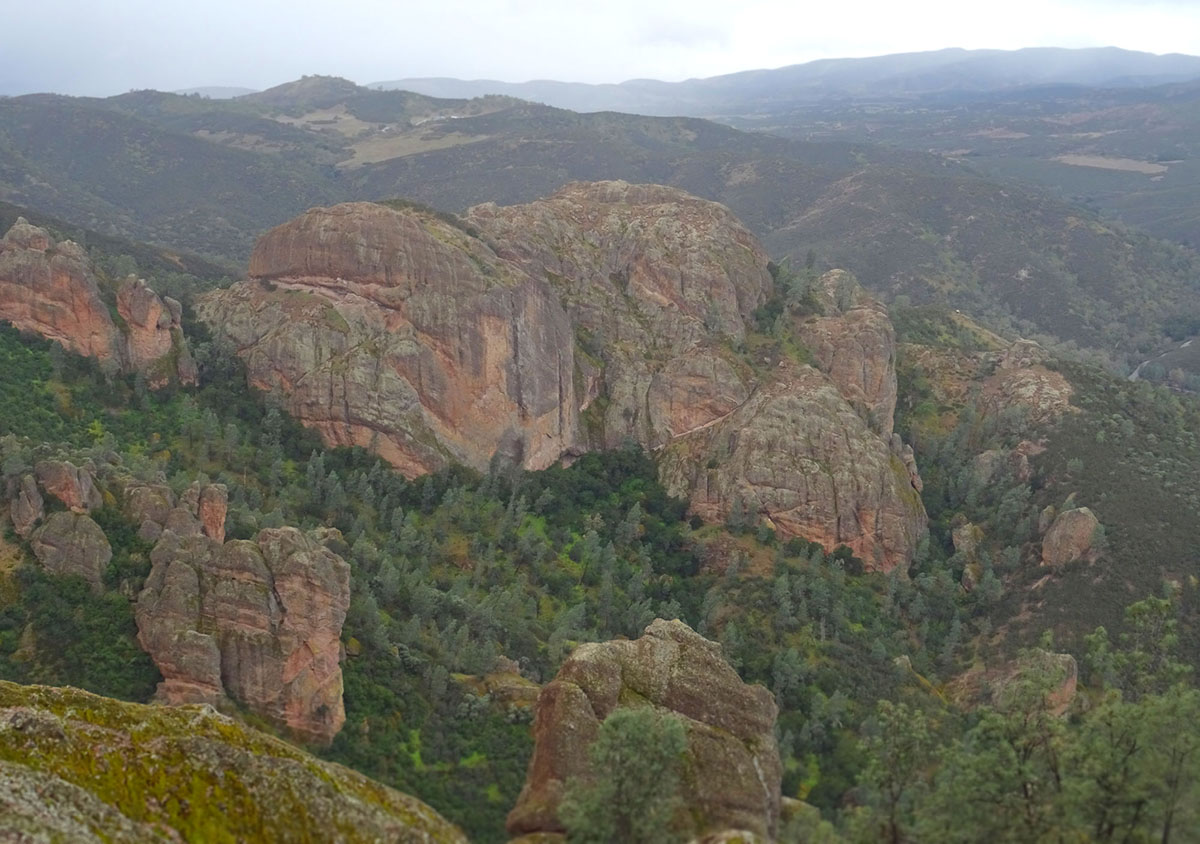
The formations found at the Pinnacles are extremely unique in that they are digested and regurgitated towers, composed of fossilized ash, mud, and rhyolite that are embedded with these tiny sharp and at times smooth and slick stones that extrude from the face as a result of the process of travel through the fault. They are very fun, and a unique form of climbing.
The 10 of us had a magical time climbing on the fluorescent orange and pink rock, which is countered by countless variations of green that exist in the area during the early spring. It makes for a sort of sensory overload when added to the shades of gray clouds that the wind was blowing overhead, bringing rain to the trickling streams that separated us from the approach trail behind us, and of course gravity.
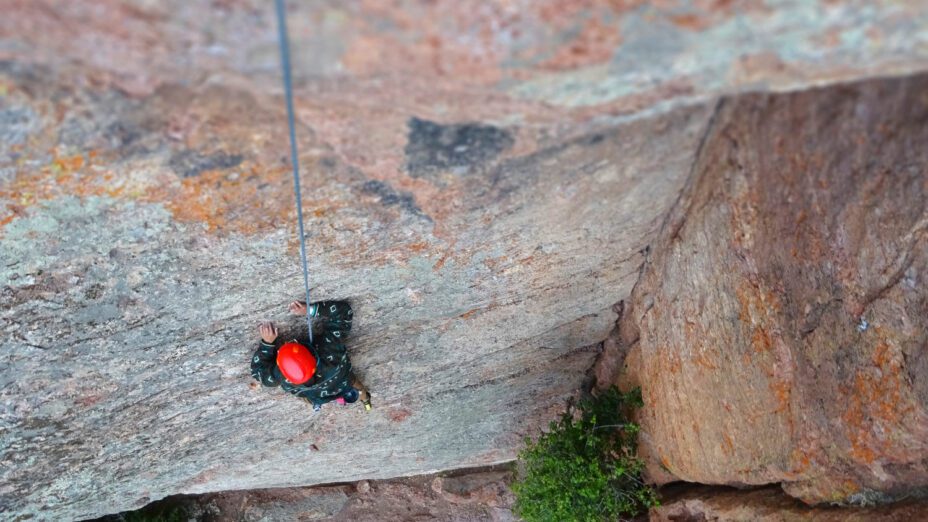
Looking down at the blank-looking route.
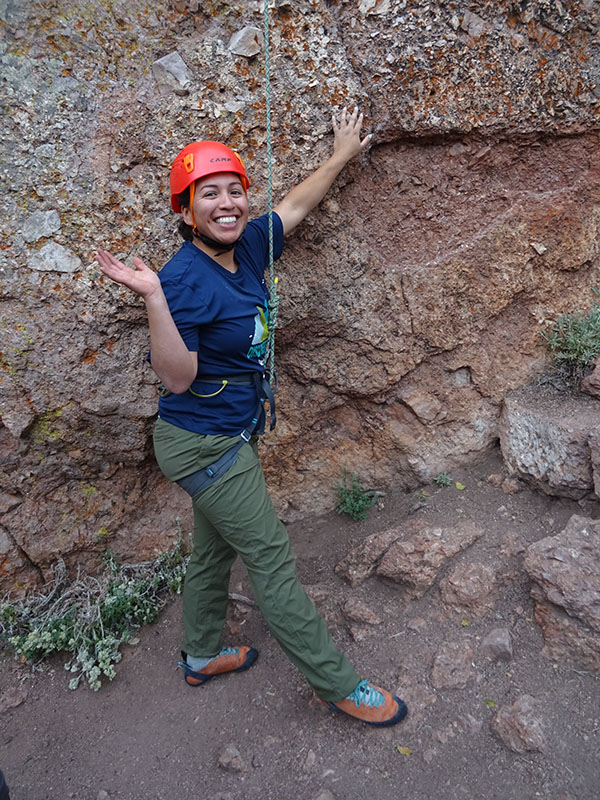 Everybody climbed as many laps and routes as possible in the time we had together and came away with at least one tidbit or another of information about an area where mountains literally moved into a mountain range.
Everybody climbed as many laps and routes as possible in the time we had together and came away with at least one tidbit or another of information about an area where mountains literally moved into a mountain range.
Now when you hear somebody tell you something is so difficult that it would take “moving a mountain to accomplish that” (or something to that effect), know that it is in fact possible for mountains like the Gabilan Range to move and the result of that process is breathtaking, and let that person know that Pinnacles National Park is a place to experience that phenomenon.
As Save Mount Diablo expands southward into the rest of the Diablo Range, it is much like the Pinnacles, like a mountain moving over time, into a new area, bringing with it all that has comprised the last 50 years of our existence.
In exposing people to amazing areas within the Diablo Range and the secrets that these areas have through educational programs like this event or our three-year SCU Fire Footprint BioBlitz, we are connecting people to this bigger picture.
We are teaching them different forms of communication through activities like climbing, building a stronger community around loving and protecting these incredible places that we are so fortunate and proud of in California, and inspiring a form of communion that is absolutely necessary for all life to flourish in balance on our planet.
“Climb on.”
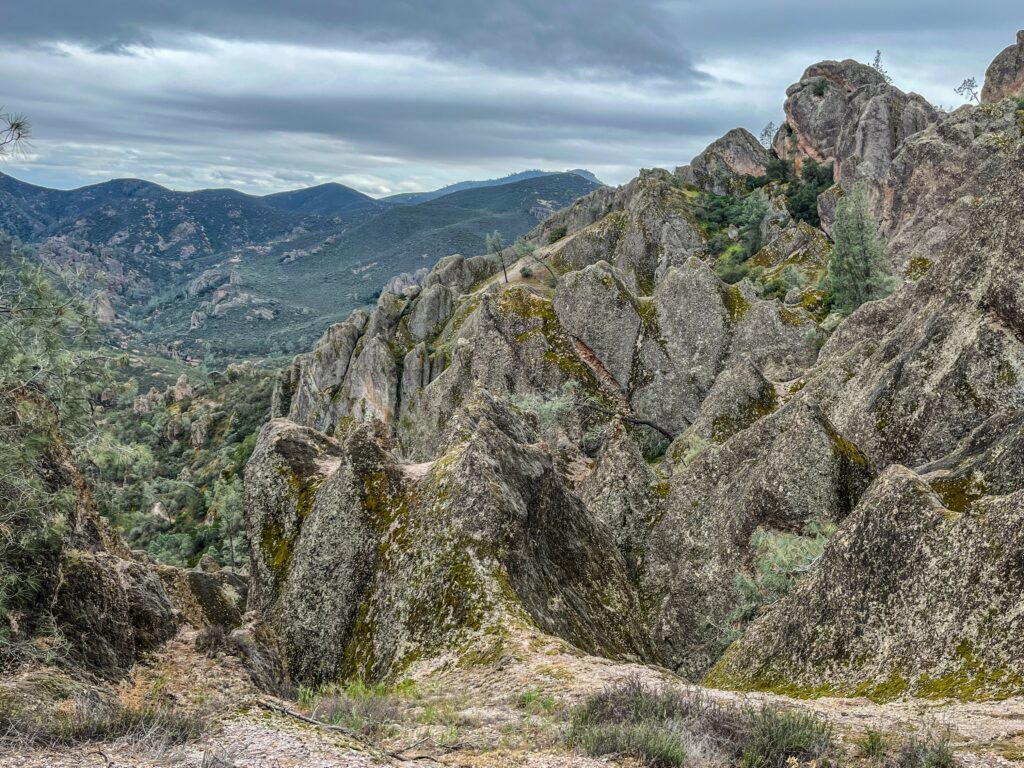
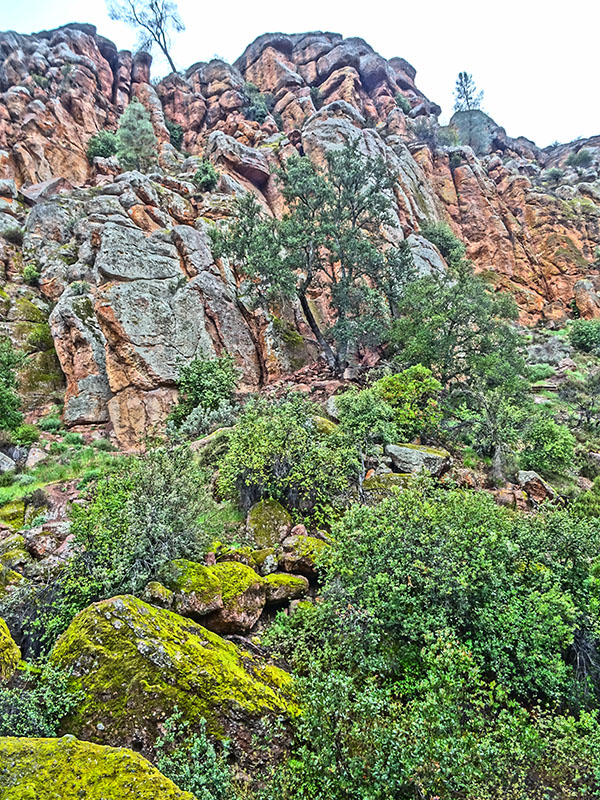
All photos by Sean Burke

